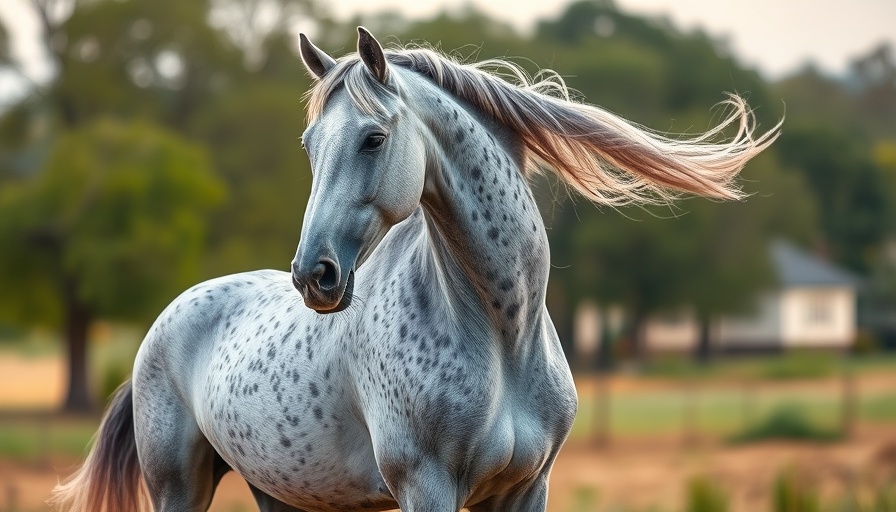
Understanding the Magnificence of the Andalusian Horse
The beautiful Andalusian horse, originating from the picturesque region of Andalusia in Spain, captivates horse lovers and enthusiasts around the world. Known for their striking appearances and gentle dispositions, these horses hold a storied place in history dating back to the Middle Ages when they were bred by Carthusian monks. With their unique combination of strength and grace, Andalusians were primarily used as war horses, showcasing their bravery and ability in battle. The export of these splendid horses did not begin until 1962, a point that emphasizes their rarity and cherished status in many countries, including the United States.
Physical Characteristics That Stand Out
Andalusians typically reach heights between 15.2 to 16.2 hands (60.8 to 64.8 inches) and weigh approximately 900 to 1,100 pounds. They come in various colors and patterns, with gray and bay being the most prevalent. Their robust, muscular builds and exuberant manes make them visually captivating. This unique appearance has led to their popularity in various equestrian disciplines, including dressage and show jumping, where they consistently impress judges and audiences alike.
The Health and Care of Andalusians
Owning an Andalusian requires certain considerations to maintain its health and well-being. Equally adored as companions, these horses are relatively easy to care for, making them suitable for equestrians of all experience levels. Regular veterinary checkups, vaccinations, and dental care are essential aspects of their health regimen. However, one must pay close attention to their diet, as these horses can easily gain weight, which can lead to serious health issues.
Common Health Issues: Awareness is Key
A point of concern for many Andalusian owners is the predisposition to certain health issues, particularly Equine Metabolic Syndrome (EMS) and laminitis. EMS is akin to diabetes, as it affects an Andalusian’s ability to properly process insulin. Conditions like this can lead to a high body condition score, and if not controlled, can worsen, leading to complications such as a cresty neck and risk of laminitis. Laminitis, characterized by painful inflammation within the hoof, can result from various underlying causes, including improper nutrition or excessive sugar intake from grass, thus emphasizing the importance of careful dietary management.
Grooming: More Than Just Aesthetics
The Andalusian horse’s thick mane and tail not only enhance their beauty but also require dedicated grooming. As their coat can trap dirt and debris, grooming is an essential practice that helps maintain their health and appearance. Regular brushing and maintenance of their mane and tail can prevent tangles and promote a healthy coat. By establishing a nurturing grooming routine, owners foster a closer bond with their Andalusians, enriching the overall companionship.
Future Predicaments: Understanding Trends in Andalusian Ownership
As Andalusian horses continue to mesmerize equestrian enthusiasts worldwide, one wonders about their future trends. With their increasing popularity, particularly in performance sports, there is an opportunity to expand public awareness about the breed’s specific needs and virtues. Moreover, as more people become interested in unique horse breeds, communities could see a resurgence in domestic lines of the Andalusian horse, which may lead to improved accessibility for those wishing to own these remarkable animals.
Final Thoughts: An Invitation to Connect and Care
The Andalusian horse is more than just a magnificent creature; it is a celebration of history, beauty, and companionship. For those considering welcoming an Andalusian into their lives or looking to educate themselves about horse care, the journey promises to be rewarding. By fostering knowledge and taking steps to ensure the health and happiness of these remarkable horses, we can all contribute to the legacy of the Andalusian horse and appreciate its extraordinary contributions to the world of equestrian sports and beyond.
 Add Row
Add Row  Add
Add 


Write A Comment